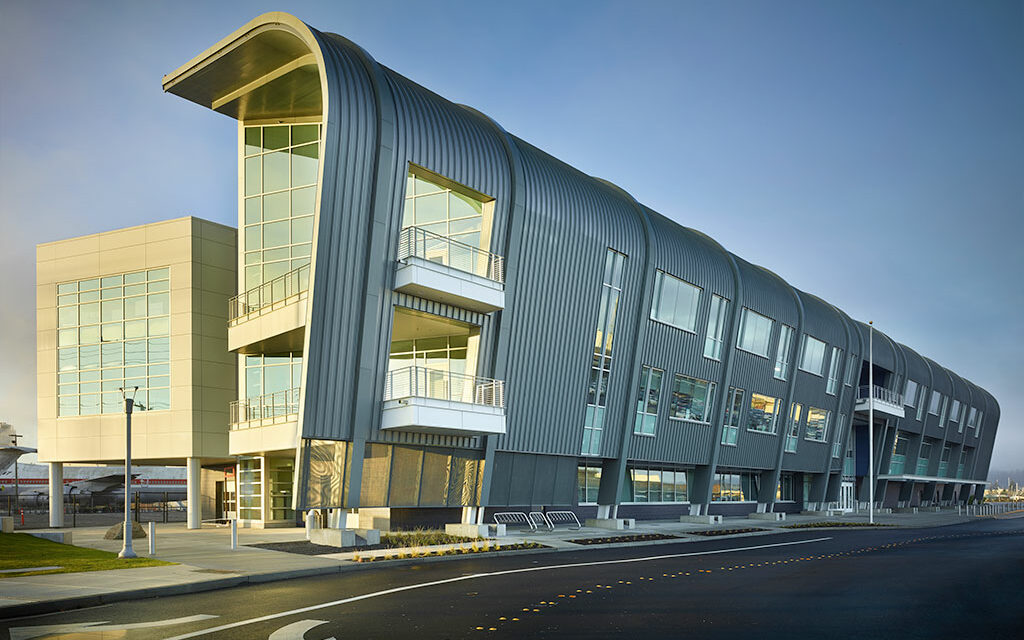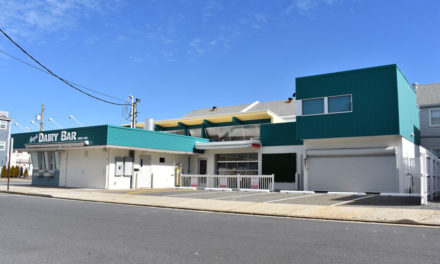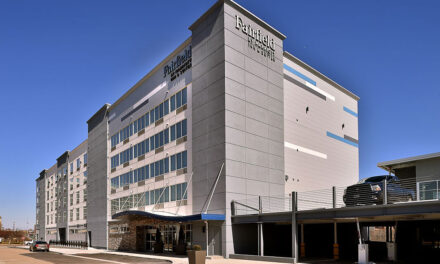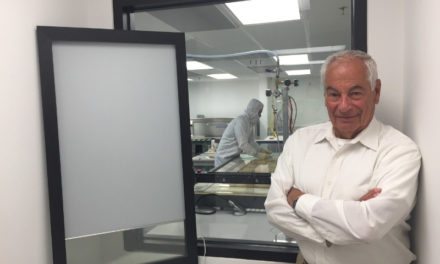Raisbeck Aviation High School (RAHS) is one of the premier STEM schools in the nation. The aviation-themed school is part of Highline Public Schools and located on the Museum of Flight campus adjacent to the King County International Airport (Boeing Field) in Tukwila, Washington. RAHS is a school of choice serving 400 students in grades 9-12. The journey from the initial vision for RAHS in 2000, to the opening of the new school in 2013 began with an extraordinary public/private partnership program that has helped the aviation and aerospace-focused school prepare students for a future rich with opportunities. From its inception, RAHS has welcomed students from nearby counties (19 school districts) with innovative recruitment strategies to ensure that the student body reflects the broad diversity of the communities served.
RAHS was the first small learning community developed and implemented within Highline Public Schools as part of a reform effort to connect student interests and motivation with engaging educational programs that are personalized, rigorous, and relevant. The goal was to keep students in school and prepare them for college, career, and citizenship. The theme for RAHS grew out of the District’s proximity to a growing aviation industry that was experiencing a shortage of technical workers and career specialists in the profession.
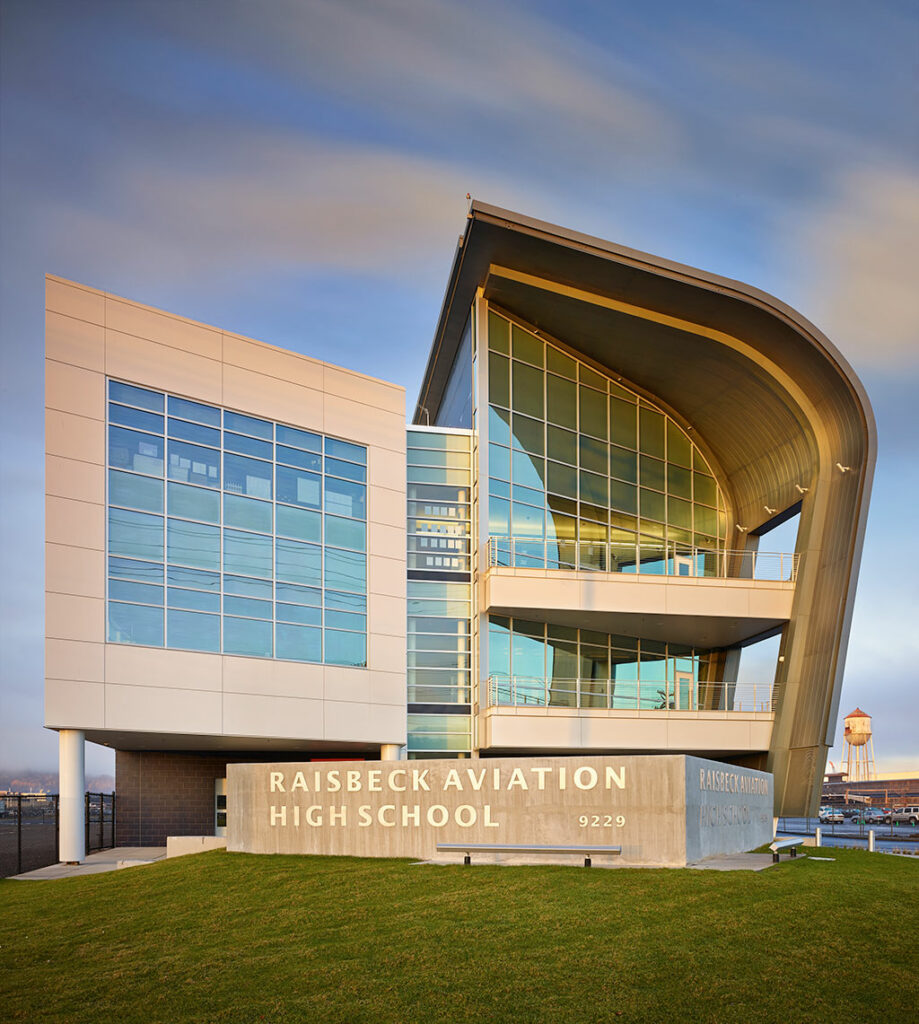
Photo credit: Benjamin Benschneider
Learning at RAHS is inquiry-based with an emphasis on students presenting and defending their work in front of industry experts. By sophomore year, each student is paired with a mentor from one of the school’s professional partners who works with them until graduation. The mentor advises the students on coursework and career paths and assists with the selection of internships with local companies. Mentors and industry partners also advise RAHS faculty on the appropriateness of projects and their application in real-world settings.
The new school embodies the culmination of the program’s evolution – from the curriculum to the site design. Its location on the Museum of Flight campus provides the opportunity for RAHS and the Museum to share educational programming and volunteer opportunities. The nearly 200 industry partners in the vicinity provide a steady stream of mentors. The iconic design feature of the three-story, 72,000 square foot building is its form – a curved cross-section inspired by the leading edge of a wing. Spaces within the building support teamwork, project-based learning, student presentations, and a highly personalized journey of discovery.
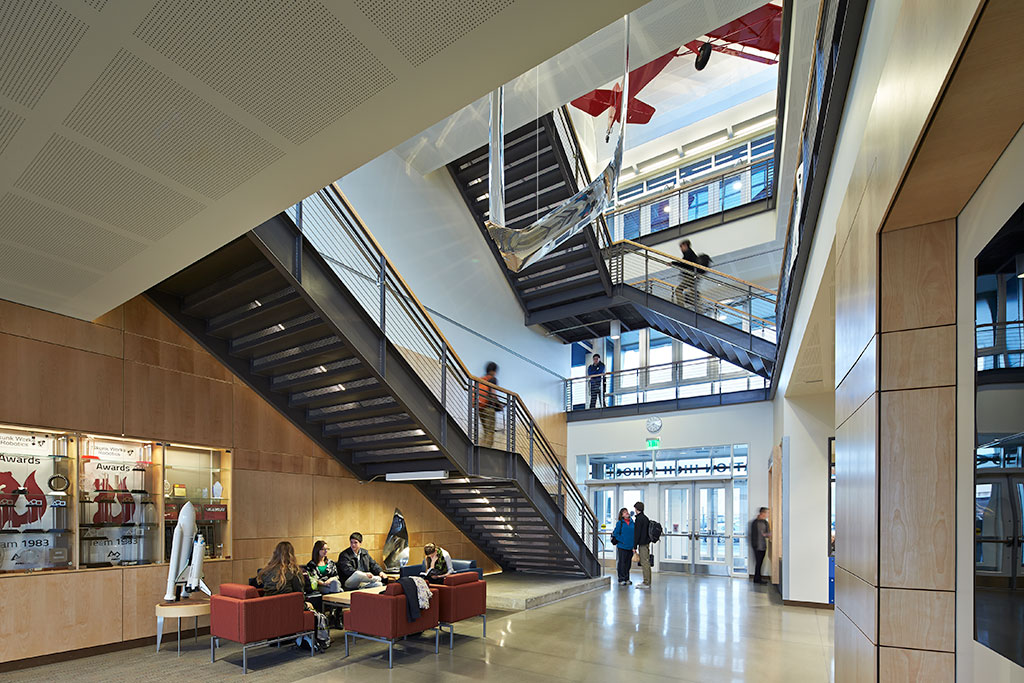
Photo credit: Benjamin Benschneider
The process of programming and design involved extensive research, community engagement, and concept testing to balance the lofty aspirations of engaged, student-focused learning with the complex demands of budget and schedule on a contaminated brownfield site. The outcome is a vital school environment that supports exploratory learning; celebrates the students, staff, and volunteers who engage in the journey; and inspires everyone who walks through the doors.
Sustainable Features
- RAHS conforms to the Washington Sustainable Schools Protocol (WSSP) reflecting LEED Silver equivalence. Interiors incorporate low or no-VOC finishes throughout.
- The stacked building results in a minimal footprint while maximizing an energy efficient shell.
- The curved airfoil volume allows for larger second- and third-floor plates, thereby meeting program needs while simultaneously reducing lot coverage and evoking the school’s overachieving theme.
- The polluted brownfield site was cleaned up following EPA guidelines and revitalized for its current use.
- RAHS is a steel-frame building constructed on a structural slab resting on concrete piers embedded in poor soils subject to liquefaction. The durable systems were chosen for longevity, adaptability and first cost.
- Metal cladding was selected for durability, low maintenance, high recycle content, and its contextual reference to the nearby Museum of Flight
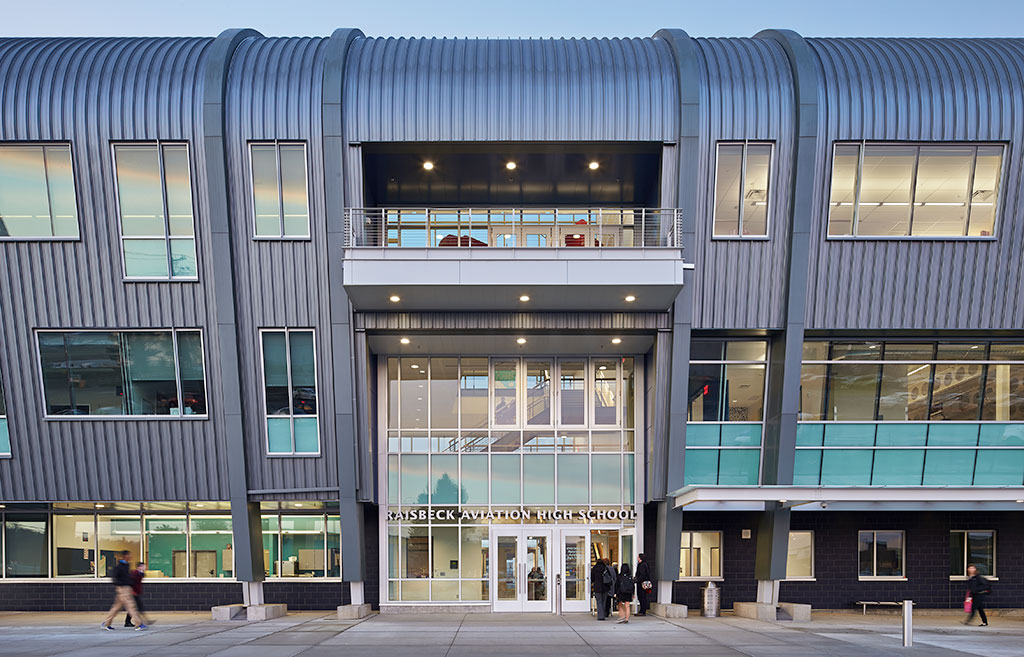
Photo credit: Benjamin Benschneider
Project Team
Bassetti Architects (Architect)
Porter Brothers (Contractor)
PCS Structural Solutions (Structural)
Hargis Engineers (Mechanical, Electrical, Communications Systems)
KPFF (Civil)
The Robinson Company (Cost Control Consultant)
SiteWorkshop LLC (Landscape)
Sparling (Acoustics)
JLR Design Group (Food Service)
Heffron Transportation (Traffic)
GeoEngineers (Geotech)
Adams Consulting (Hardware)
Photography
Benjamin Benschneider

